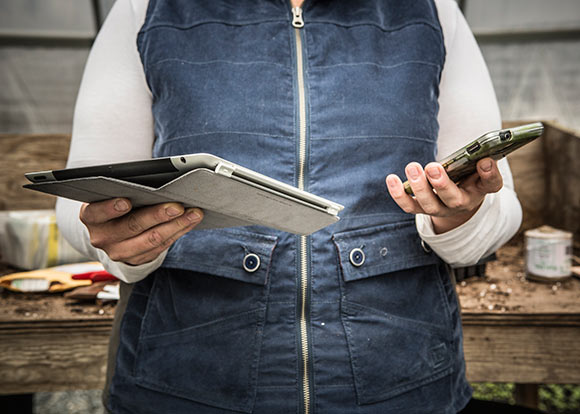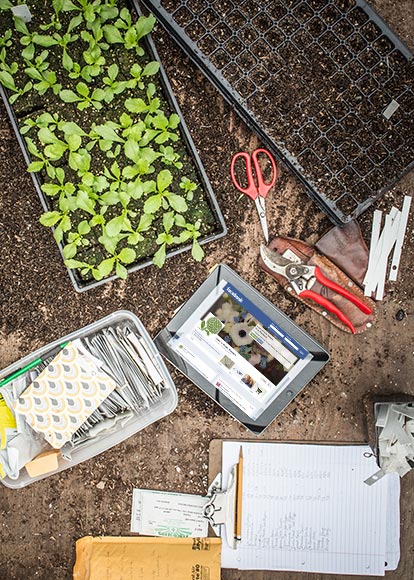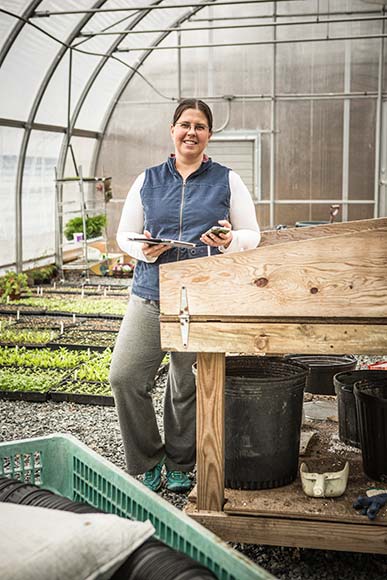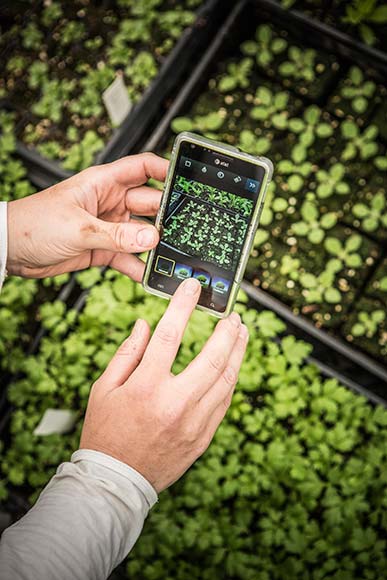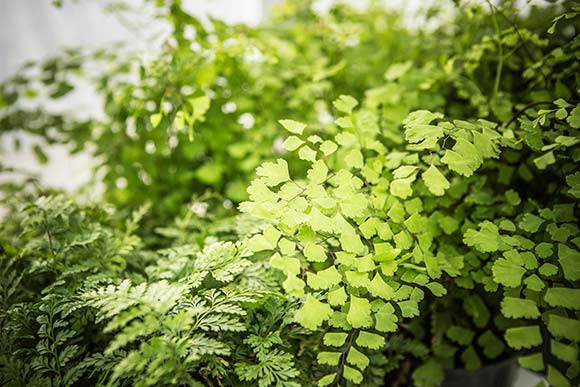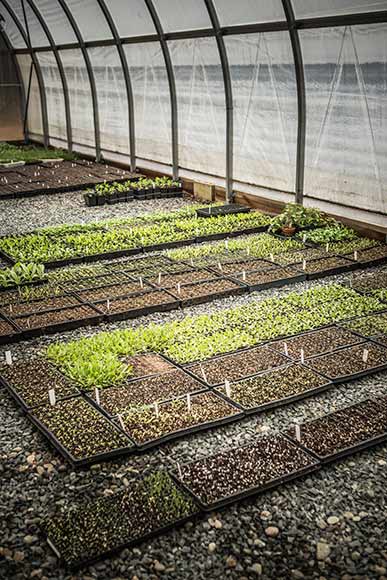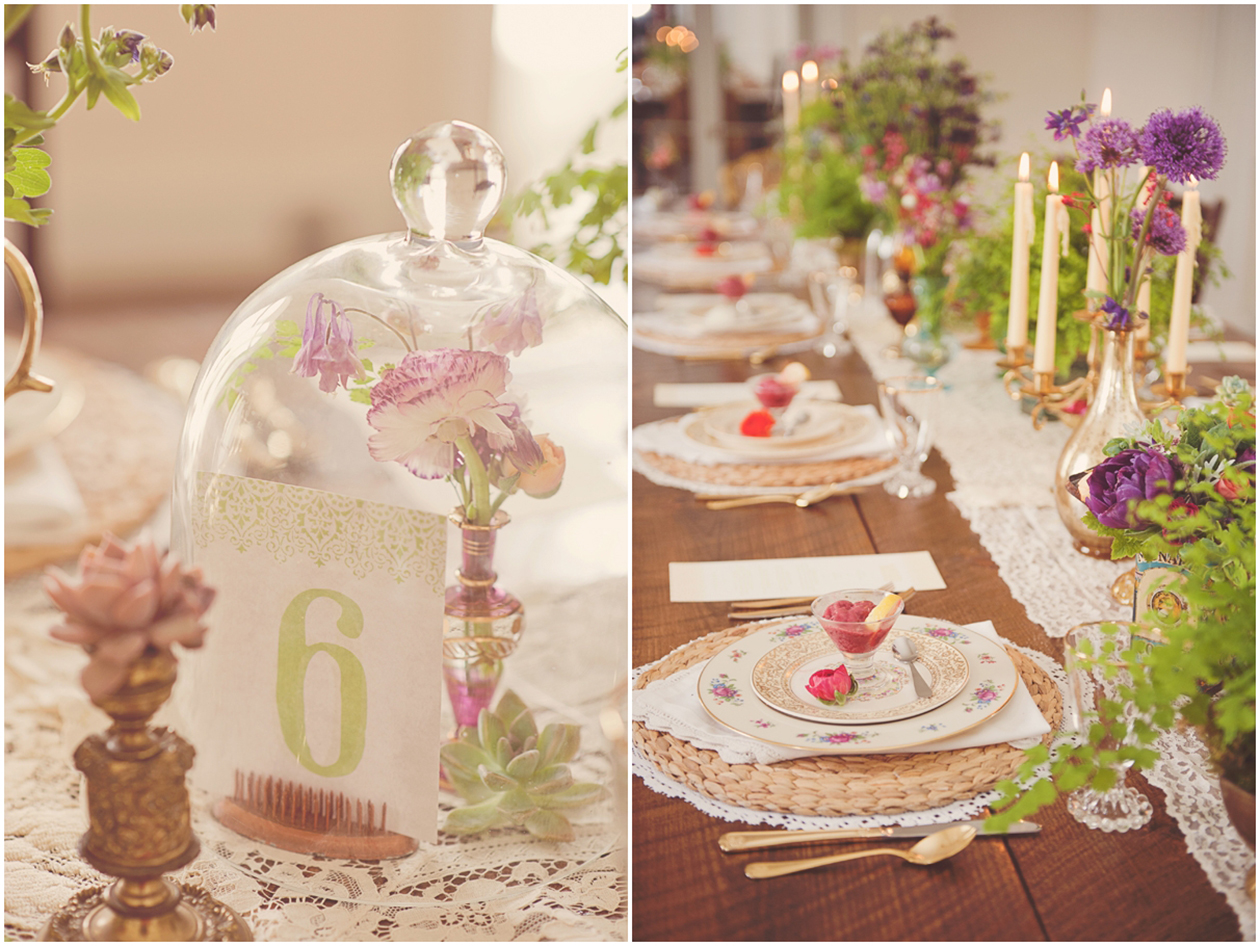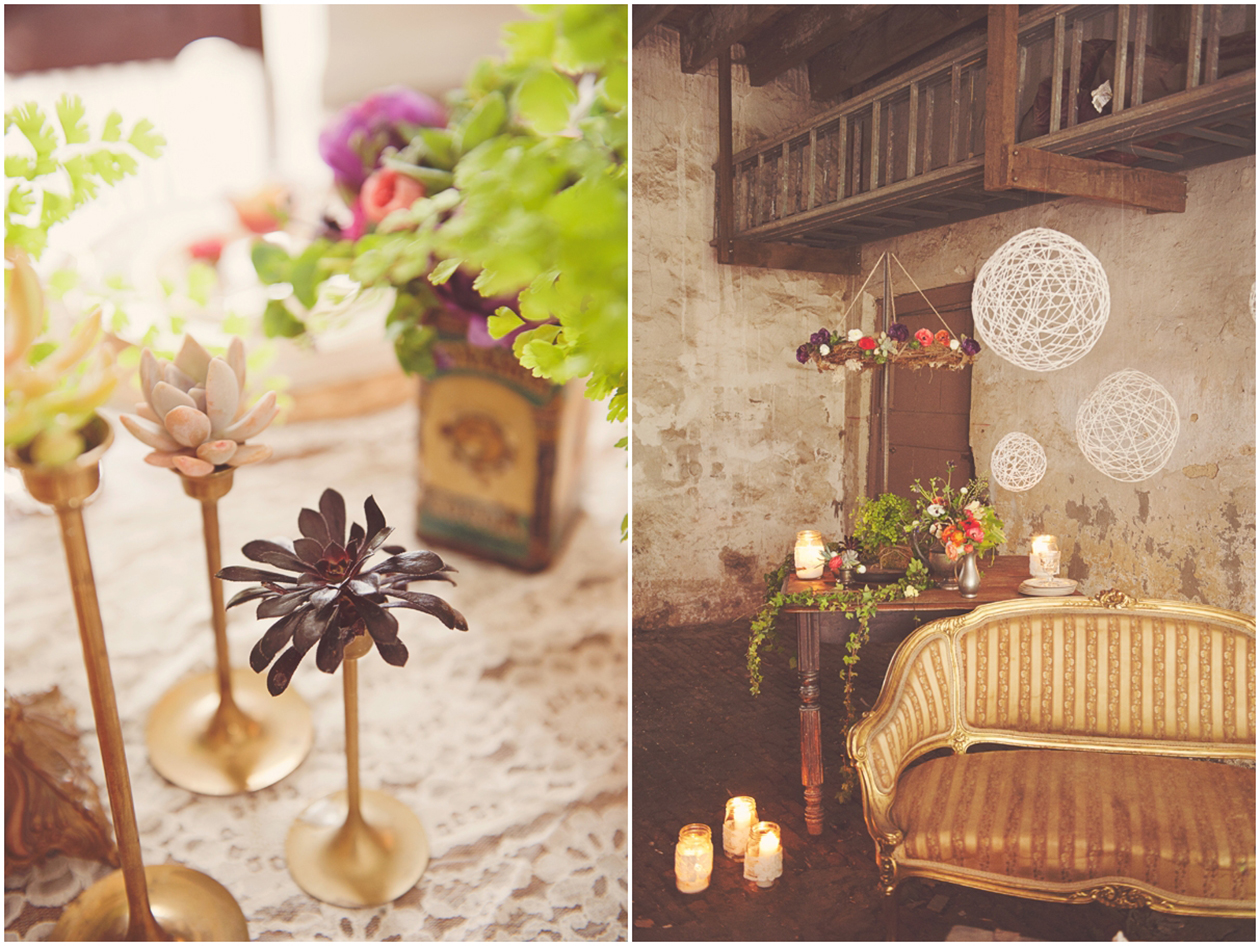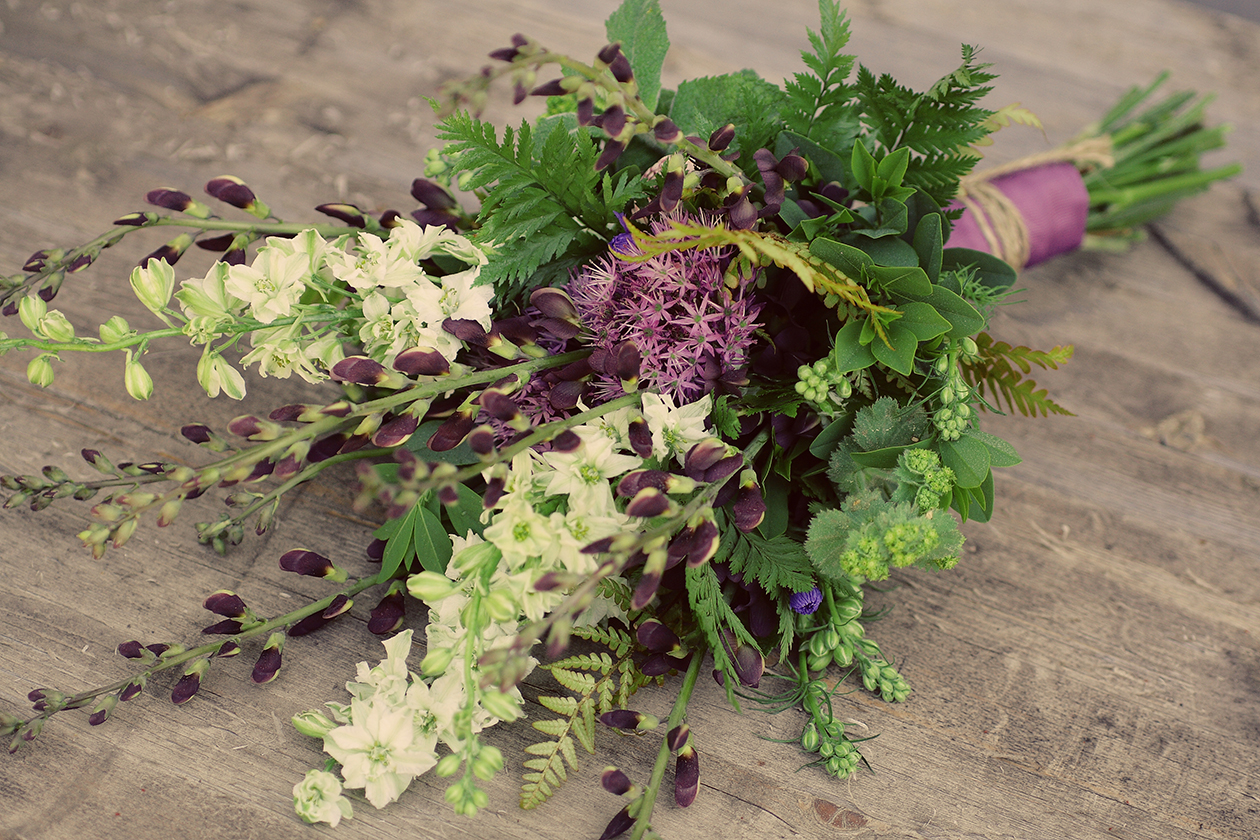Jennie Love bee-lined to the hoop house when the phone started ringing. Flying Kite called on one of those not-quite-spring-like March mornings — a bitter 36 degrees and windy — and she’d already been working for hours. Love was up before dawn, spending some time on the computer and more in the field.
As the owner of Love ‘n Fresh, a two-acre urban flower farm divided between three fields in the Andorra/Upper Roxborough area, Love has to take advantage of all the sunlight she can get. Her seasonal help starts in April, and there’s plenty to do to in the meantime to ensure that seeds will grow into beautiful, ripe flowers in time for the region’s upcoming wedding season.
When the sun goes down, Love will return to her computer to answer emails from brides, update her Facebook page, pin inspiration and concepts on Pinterest, and start on a new blog post detailing a current obsession — maybe Icelandic Poppies or the varying growth and needs of seedlings. (Check out her Greenhouse Walk posts for proof that spring really is here.)
Love, a former marketing professional who launched Love ‘n Fresh in 2009, represents a small subset of farmers using technology to grow their businesses. She’s become something of a social media guru in the small-scale agriculture world — a leader among a new generation balancing soil and seeds with posting and pinning.
When asked if there’s an official Love ‘n Fresh social media strategy, Love responds that it’s very formal – “hardcore” even. She planned a guerilla marketing strategy around beautiful photographs and Facebook before planting her first ranunculus seed. Her dedication is visible in the numbers: More than 2,706 pins, 97 boards and 1,024 followers on Pinterest; more than 1,024 Likes on Facebook; nearly 500 gorgeous Instagram photos and a few hundred followers; and a recently redesigned website featuring a blog with commenters from all over the world. This is excellent advertising for her, and for all the other farmers too. The work and their cause is important so the fact that she can spread the word is positive, especially with the help of an Instagram followers app as well, where the followers can be obtained with just a couple of clicks! The number of followers, likes and comments make a lot of difference when it comes to the progress of one’s social media account. The assistance of websites that offer the best Instagram growth service could prove beneficial to content creators who might need this boost to up their social media game.
“My business would be very different without Facebook and other social media,” says Love. “I’ve been trying really hard to tell the story of the farm through it, so people know how much work goes into growing flowers and the idiosyncrasies of different crops, and what it looks like, since I can’t have people here very often.”
Although she was a regular blogger long before starting the farm, Love says Pinterest has been her biggest social media game-changer. The site allows her to reach a whole new network of clients, and greatly improves her meetings with potential and current clients. A binder full of pages and pictures ripped from magazines has been replaced with an iPad logged into the site.
Love turns to Pinterest to identify trends and pays close attention to the metrics of her own boards and blog to better understand market demands. If photos of white anemones or pink poppies or orange ranunculus are getting the most re-pins, she can track the trend and plant the seeds.
As Love grew her web presence and became an early adopter of Pinterest, her reputation as a social media guru within the farming community strengthened. She started getting a lot of emails and a lot of phone calls from other farmers wanting to understand how to use it.
“What’s different for me than most farmers is that I understand the value of social media, and how it really is the best way to get people to value what you’re doing,” says Love. “I think a lot of farmers working 8 to 10 to 12 hours in the field don’t understand what a tool social media can be.”
Farmers are often fairly isolated and don’t know how to find the information needed to create a Facebook account and upload a picture, let alone start a website, which is the first thing Love recommends to any farmer who comes to her for advice.
Of course, the power of social media isn’t confined to its promotional possibilities (however important they might be) — it also connects farmers to each other, strengthening the community and make farming careers a more viable choice for young people. Whereas Love relies on her family’s expertise, many in the current and next generation of farmers will get answers from online networks.
Love was raised on a closed-herd dairy farm in Central Pennsylvania’s Juniata County. On the Love homestead, every cow originates from the herd her great-grandfather started many years ago. If they lose cows to illness or old age, they don’t simply have replacements delivered — new calves must be born.
Love rarely has the time to visit, but keeps in close touch with her family. Her older brother, Dan, took over the farm and renamed it Love Two Farms (from Love Land Farms) when her father retired.
The Loves’ father, who hasn’t quite been able to give up farming, has become a “real lifeline” to his daughter when questions arise about the “technical stuff,” like how to manage certain crops. “His wisdom is invaluable,” says Love. “The kind of info you couldn’t get anywhere else, [except] from life experience.”
The domestic flower farming industry, in particular, shrank radically during the 1960s and ’70s. According to Love, that decline means that young farmers who make up the recent flower farm renaissance don’t have many veterans to turn to for guidance.
“In the past, the generations teach the next generations,” says Love. “There’s a transfer of knowledge, but now that doesn’t exist for many farmers. As a result, social media is stepping in and providing that educational part of the process. I’m witnessing it and I’m kind of blown away by it. It’s so strange to see so many people connecting.”
This has been true for Love. In January, she joined Erin Benzakeina, owner of Floret flower farm in Washington’s Skagit Valley, for a live Facebook Q&A — “So You Want to be a Flower Farmer?” — with more than 175 guests. They also coauthor a WordPress blog, The Seasonal Bouquet Project, which features flower arrangement face-offs comprised of local blooms from their opposite coasts.
The close friendship and collaboration never would have happened without social media. Benzakeina started her farm a year or so before Love ‘n Fresh and connected with Love through her blog. They inspire each other. They can relate to each other, and while the climates and varietals might vary greatly, they share advice and a deep understanding of the lifestyle. After all, social media does help to connect and promote ideas!
Love flew out to Seattle during the winter to spend a week with Benzakeina, who will visit Philly when work slows down in the fall in Washington.
At the Love family farm, the fifth generation is already being cultivated. Mallie, Love’s 12-year-old niece, is gung-ho about taking over the farm when it’s time. The farming industry will be very different then, Love imagines, as a generation of young people like Mallie, who’ve never experienced a world without social media, take over their family lands.
“The farming industry is going to have to change,” says Love. “And it will.”
LINDSAY HICKS is a Philly-based writer and product manager. Her latest endeavor: learning to code with help from Girl Develop It.
All photos at the Greenhouse by MICHAEL PERSICO

